What is Chenille Embroidery ?
Chenille Embroidery is a special type of raised embroidery made with soft, thick, and fluffy (towel-like) threads. The name comes from the French word “Chenille”, meaning “caterpillar”, because the yarn looks soft and fuzzy like a caterpillar.
This embroidery not only gives a unique textured style but also adds a classic, luxurious, and nostalgic feel to garments. It is most popular on varsity jackets, baseball uniforms, hoodies, and sweatshirts—especially in designs where letters, numbers, or logos need to stand out in a bold, raised style.
Send us your logo or design now to see how it looks with this printing technique — and get a free 3D mockup within 24 hours.
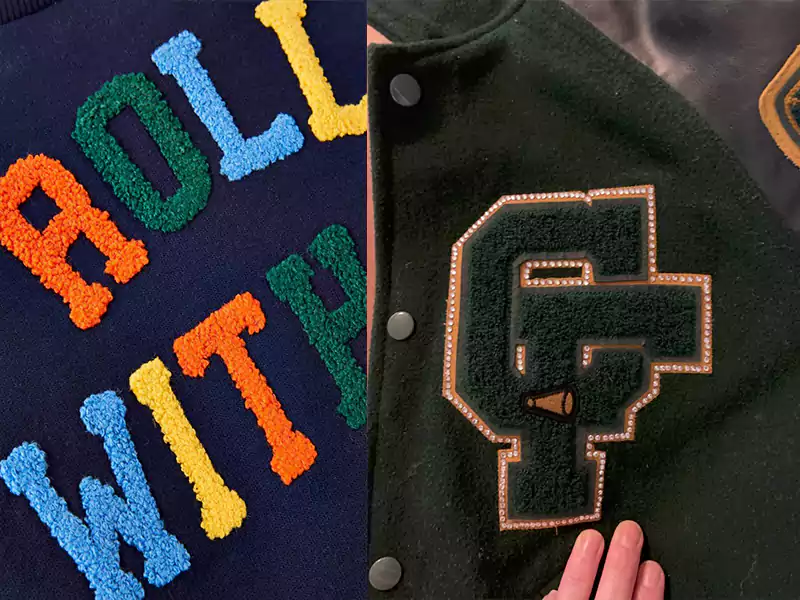
From Concept to Perfection Explore Our Chenille embroidered Products Collection.
As an experienced and professional clothing manufacturer, we specialize in bringing innovation and quality together. With our expertise in Chenille embroidery technique, we have crafted a wide range of products including t-shirts, hoodies, sweatshirts, and tracksuits that stand out with their unique appeal. This carousel showcases how Chenille embroidery adds depth, texture, and vibrant detail to garments, turning simple apparel into premium fashion pieces. Backed by years of manufacturing experience and advanced printing skills, we help brands create collections that not only look stunning but also reflect durability and craftsmanship. Trust our expertise to transform your vision into reality with precision and style.
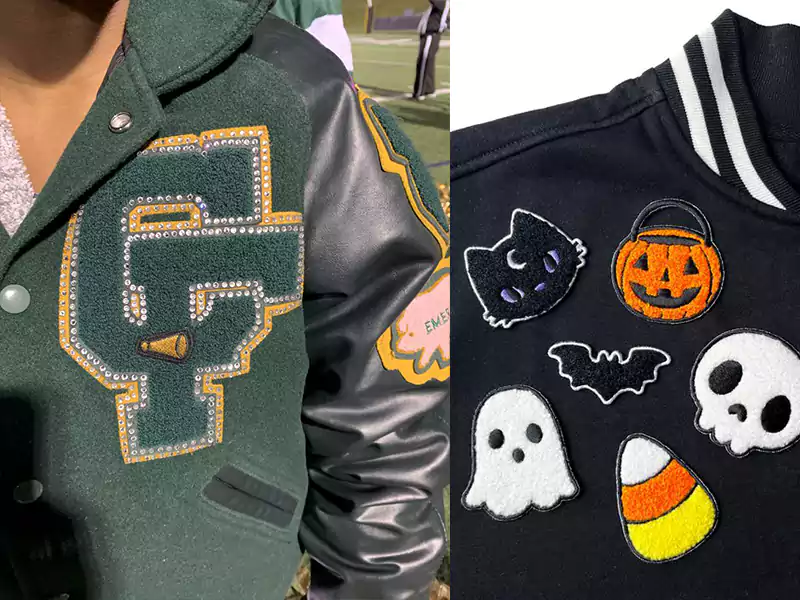
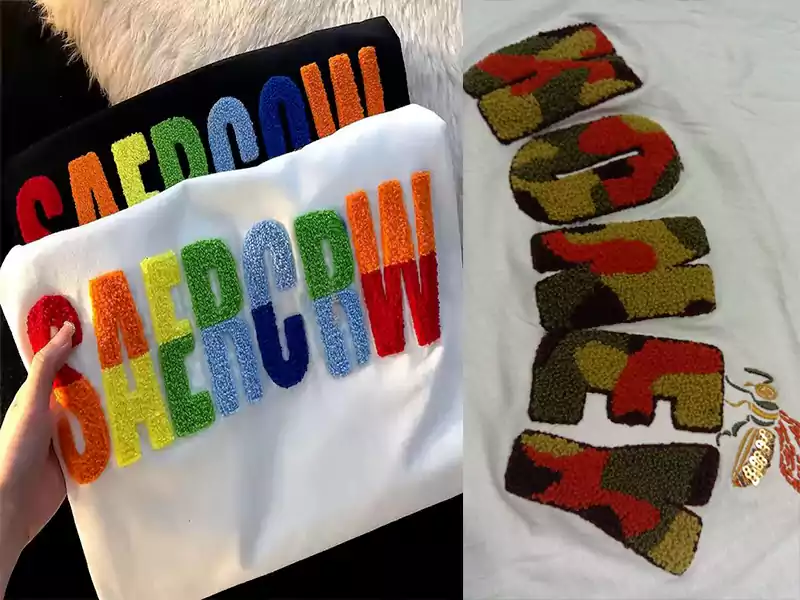
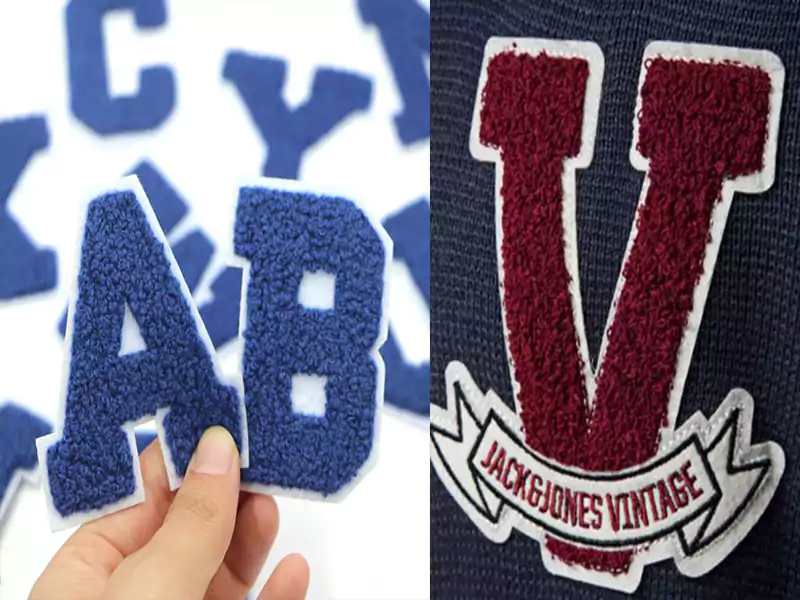
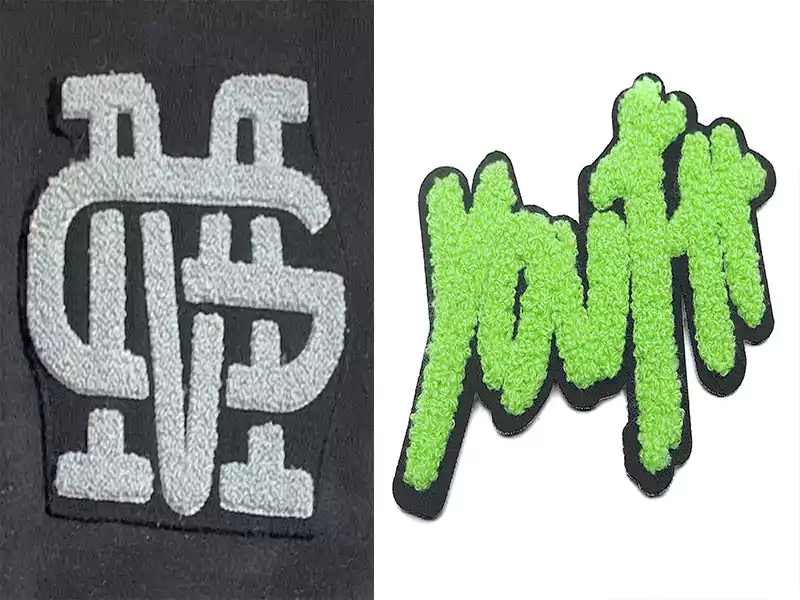
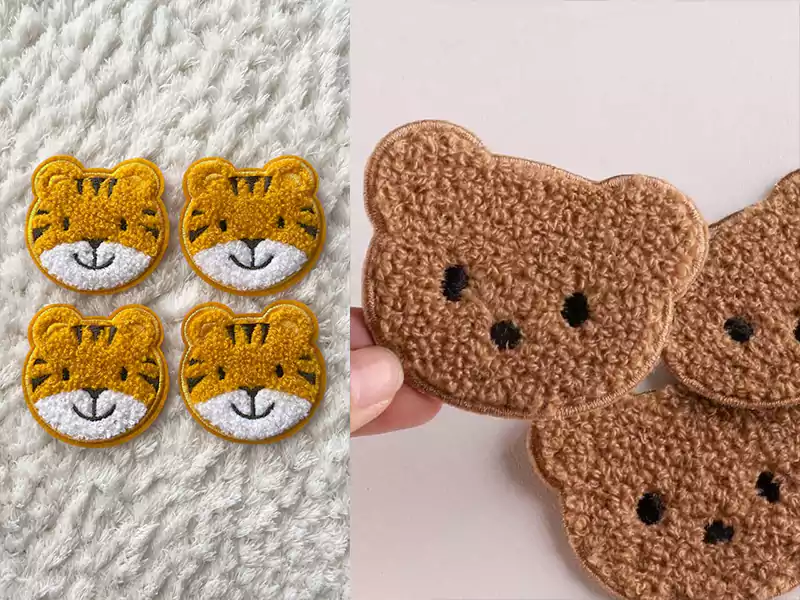
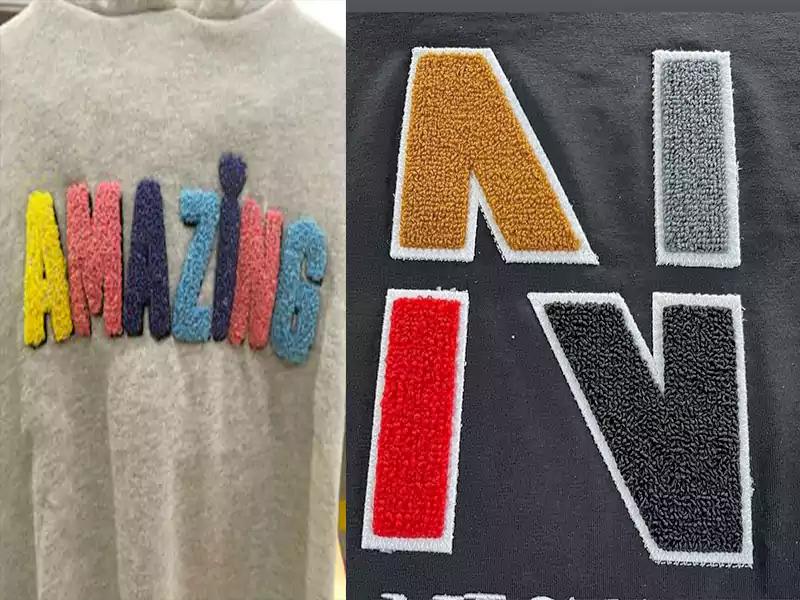
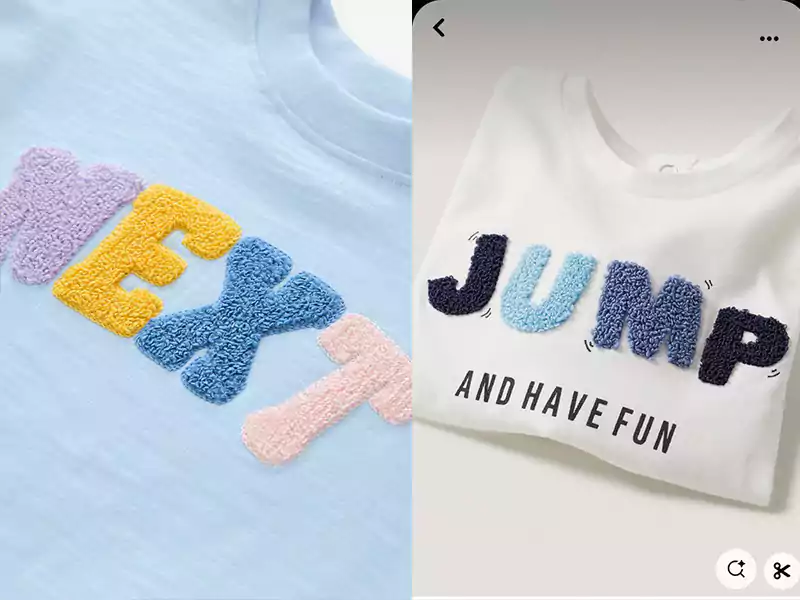
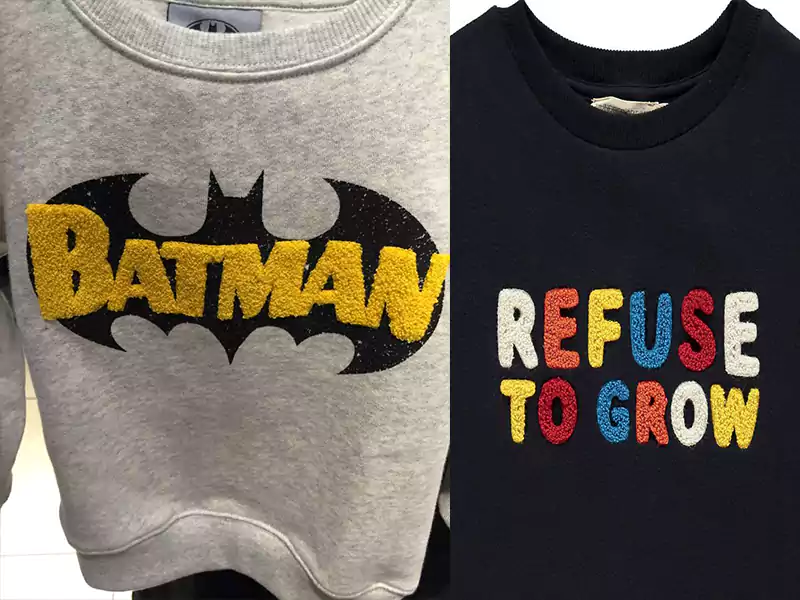
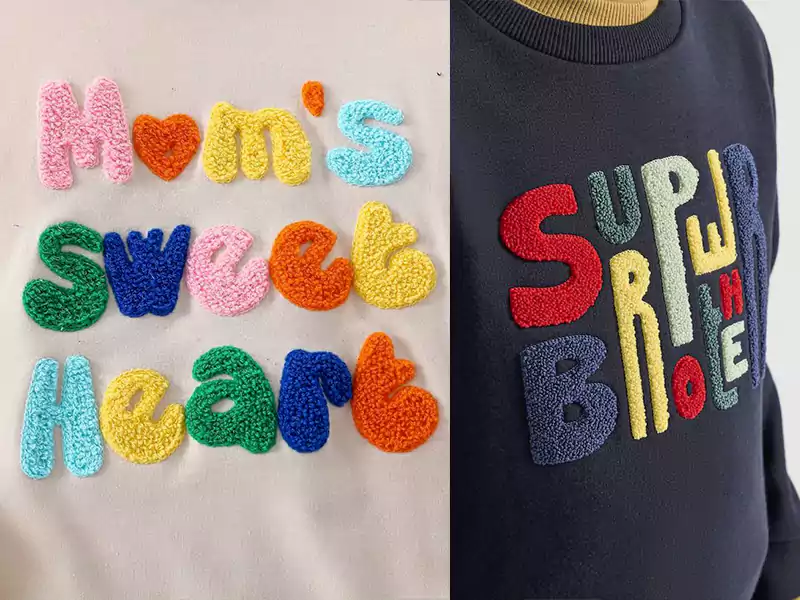
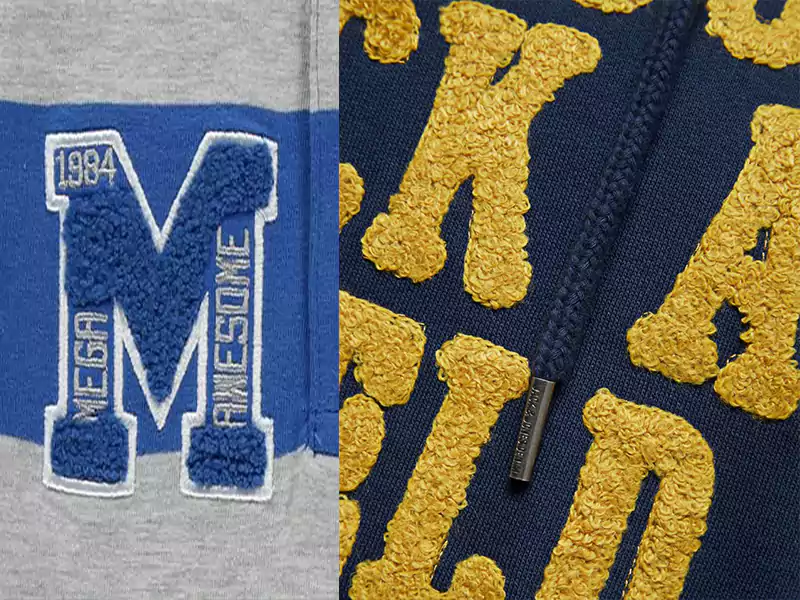
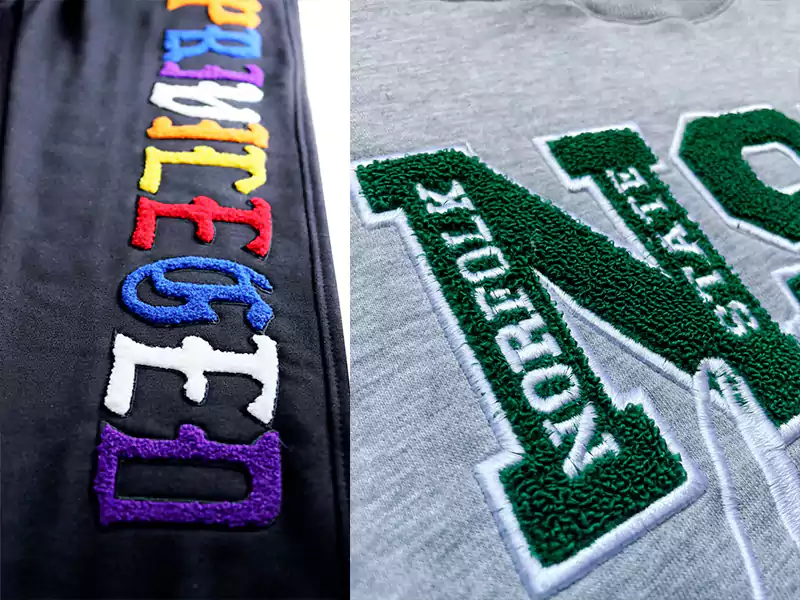
Today, chenille patch hoodies and varsity jackets with chenille patches are becoming increasingly popular not just in the U.S., but also across European and Asian markets—particularly for companies making branded custom wear or new fashion startups.
What makes chenille embroidery unique is the type of yarns used, applied by a Chenille Embroidery Machine, which raises and fluffs the thread on the surface. This is what sets it apart from traditional embroidery. Because of this, chenille is widely used not only for varsity jackets but also for making premium custom patches.
The demand for custom chenille embroidery is growing because it looks much more durable, bold, and premium compared to printing. People use it for branding, uniforms, and events—creating patches that look vibrant, textured, and eye-catching. In today’s fashion trends, chenille embroidery has found a special place, especially in streetwear and fashion wear. Young people and brands looking for a stylish, unique touch often add soft, raised chenille patches to their clothing. Whether it’s a university logo or an artistic design, chenille patches give garments a premium, classic look.
Currently, many brands supply chenille patches in different sizes and colors so customers can sew or iron them onto jackets, hoodies, or even bags. For customers wanting to highlight their team or brand logo in a large and bold way, chenille is one of the best options. It has also adapted to seasonal needs—like Christmas-themed chenille designs on winter sweatshirts and gift apparel. Large chenille back patches are also making a comeback, becoming very popular with younger generations.
History of Chenille Embroidery – From Traditional Craft to Modern Fashion
A centuries-old art form that has become a modern brand identity! Chenille embroidery traces back to 18th-century Europe, where it was first introduced in France. The word “Chenille” means “caterpillar” in French, referring to the round, soft texture of the thread. Initially, this technique was done by hand embroidery, where soft yarn was applied in a special way to create a raised, velvet-like surface.
Over time, it became popular in the U.K. during the 19th century, especially for home décor items like curtains, bedspreads, and table covers. But in the mid-20th century, chenille embroidery took a new turn in the U.S. when varsity jackets and baseball uniforms began using chenille patches. That was when custom chenille patches became a symbol of identity for sports teams, colleges, and military units. Today, with advanced machinery and high-quality yarns, this traditional technique not only survives but thrives—revitalizing modern streetwear, hoodies, and custom fashion. Chenille patches are now mass-produced wholesale so brands can add a distinctive, premium touch to their apparel.
How is Chenille Embroidery Done? – A Creative Process Step by Step
Chenille embroidery is both technical and artistic, creating softness, volume, and appeal that regular embroidery cannot match. It is typically done using loop stitch or chain stitch, with thick, soft, velvety yarn (usually acrylic or cotton).
1. Design Preparation – The design (logos, letters, or shapes) is created on embroidery software. This is where custom chenille embroidery begins.
2. Fabric & Backing Selection – Usually, felt or twill fabric is chosen as the base, giving strength to the patch.
3. Machine Embroidery – Special Chenille embroidery machines use unique needles and loop techniques to apply thick yarn onto the fabric.
4. Backing & Finishing – Patches are prepared with sew-on, iron-on, or adhesive backings so they can be easily applied to hoodies, varsity jackets, or Christmas sweatshirts.
This process requires precision, patience, and artistry. That’s why wholesale chenille patches are carefully crafted to represent a brand’s identity.
Where is Chenille Embroidery Used? – A Mix of Softness, Pride, and Identity
“Every garment gains recognition, every brand gains prestige.”
Chenille embroidery is more than decorative art—it’s a symbol of identity in modern fashion and branding. Its velvety texture, raised look, and bold colors make it highly popular:
1. Varsity Jackets & College Wear – The most iconic use of chenille patches, symbolizing achievements, team logos, or academic honors.
2. Sports Teams & Baseball Uniforms – Chenille patches display logos, numbers, or mascots on uniforms.
3. Fashion Garments & Hoodies – In modern streetwear, a chenille patch hoodie is not just clothing but a brand signature.
4. Seasonal & Holiday Collections – Chenille Christmas patches are a trendy part of festive wear and gift apparel.
5. Branding, Promotions & Custom Orders – Businesses and events use custom chenille patches for a unique, professional, and eye-catching identity.
How to Apply Chenille Patches? – Make Identity Easy
Iron-On Method:
• Place patch on clean, flat fabric.
• Cover with thin cloth or parchment paper.
• Press with medium-high iron (no steam) for 10–15 seconds.
• Iron from the back as well for stronger bonding.
• Wash by hand for the first time.
Sew-On Method:
• Place patch in position and secure with pins or temporary glue.
• Sew neatly around the edges by hand or machine.
• Trim excess threads.
Pros & Cons of Chenille Embroidery Advantages:
• 3D texture makes logos and designs stand out.
• Soft and luxurious feel, perfect for hoodies, jackets, and sweatshirts.
• Durable and long-lasting, especially when sewn.
• Versatile – suitable for fashion, sports, branding, and seasonal collections.
Disadvantages:
• Needs careful washing (gentle or hand wash).
• Can be affected by humidity, heat, or sunlight.
• Some may experience allergies from adhesives or fibers.
• Not suitable for all fabrics (e.g., delicate or slippery materials).
How to Care for Chenille Patches?
• Wash inside-out, preferably by hand or gentle cycle.
• Use mild detergents only.
• Air dry in shade (avoid dryers).
• Do not iron directly on patch—cover with fabric if needed.
• Store on hangers to avoid creasing large patches.
Types of Chenille Embroidery
1. Loop Chenille – Classic style with yarn loops, perfect for varsity jackets.
2. Cut Chenille – Loops are cut for a smooth, velvet look (modern, used on hoodies).
3. Mixed Chenille with Embroidery – Combination of chenille filling with embroidered borders.
4. 3D Chenille Patches – Raised with foam backing for bold logos.
5. Seasonal/Theme-Based Chenille – Festive or holiday designs like Christmas patches.
Where to Buy Chenille Patches?
Trusted suppliers like Ascension International offer services from custom designing to bulk production. They provide options for iron-on, sew-on, or Velcro backing in different sizes, colors, and styles.
FAQ'S
Does sublimation only work on polyester?
Yes, sublimation only works on fabrics containing polyester because the ink bonds only with polyester fibers.
Does sublimation printing get damaged with washing?
No! If done with the right temperature and process, sublimation lasts for years.
abc
abc
abc
abc
abc
abc
abc
abc
abc
abc
abc
abc
abc
abc
abc
abc
